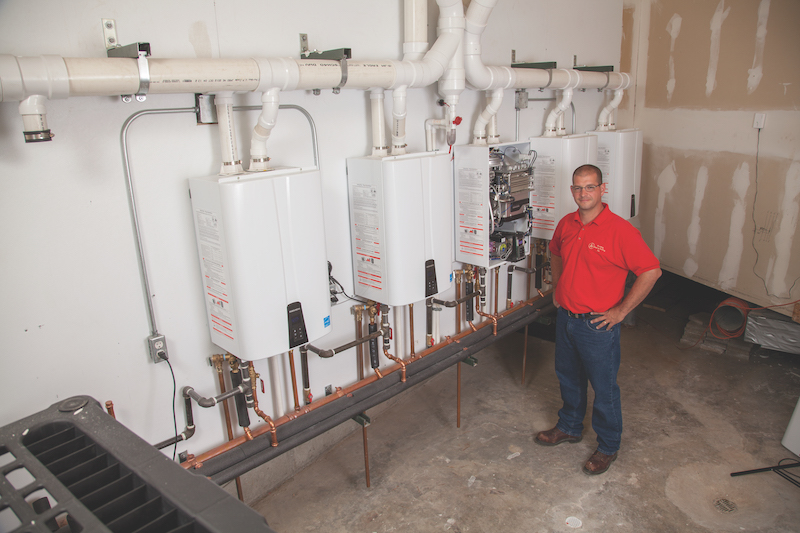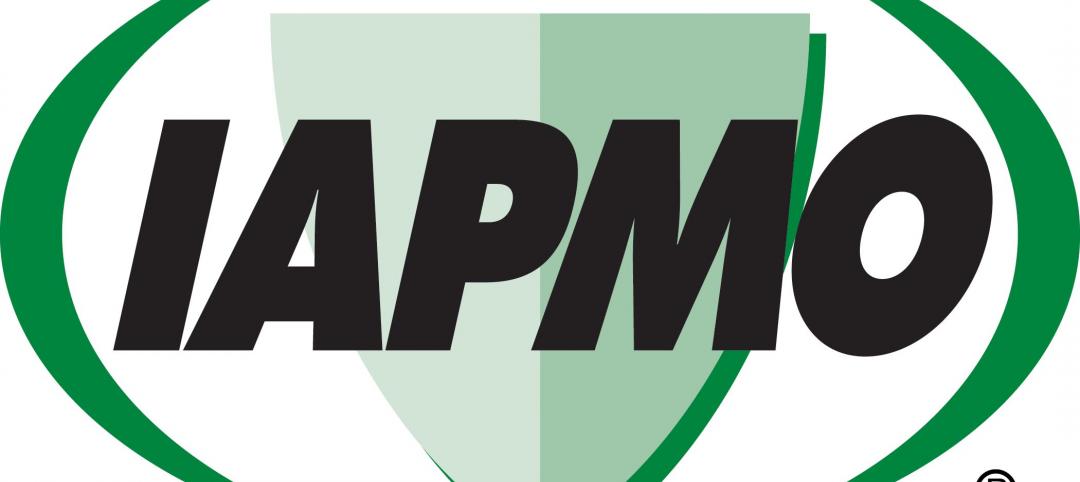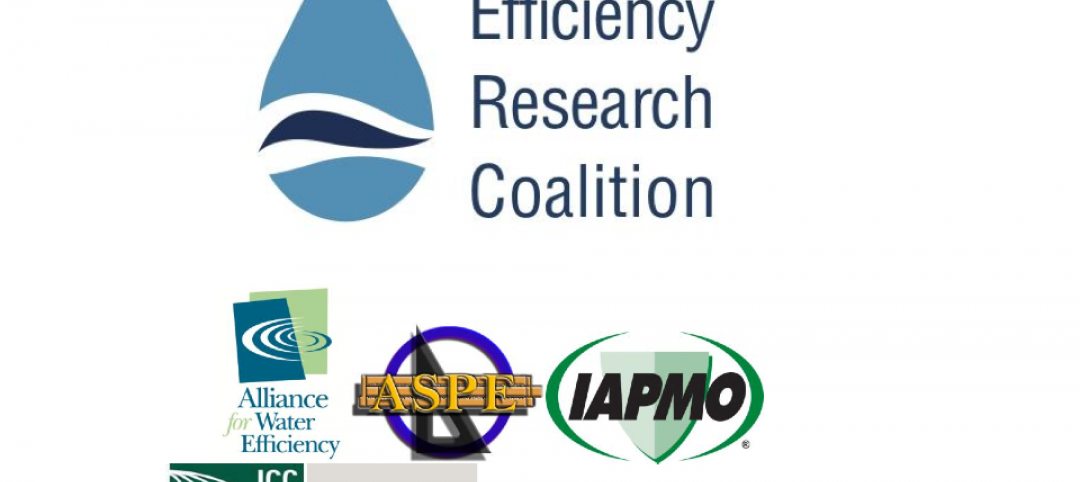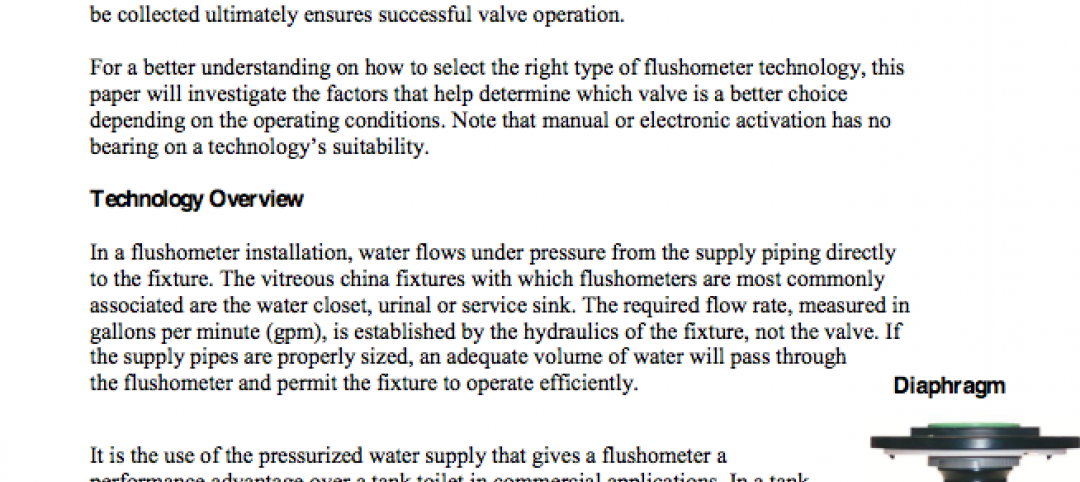Culver Cove is an 80‑unit condo complex located on Lake Maxinkuckee near Culver, Ind.
Originally hot water was supplied from three strategically located utility rooms, each with six 100‑gallon commercial tank‑type heaters. Circulating pumps and mixing valves were required to prevent scalding. Rich West, Executive Director of Culver Cove, was looking for a more efficient hot water system to reduce energy costs, especially during low demand periods. His research led him to the Navien Premium Efficiency (NPE) tankless water heaters that would eliminate the energy cost of constantly running the tanks to be ready for hot water demand.
 West worked with Mike Lambert, then with Mid-City Supply Co., and Clark Boyles of P-M & Associates, the Navien distributor and rep in northern Indiana. They recommended a phase one installation of five cascaded Navien NPE-240A units for about one-third of the complex—about 26 units, from one to three bedrooms each. With the proven energy savings of the first phase, Culver Cove proceeded to change out the other two utility rooms that served the rest of the condos.
West worked with Mike Lambert, then with Mid-City Supply Co., and Clark Boyles of P-M & Associates, the Navien distributor and rep in northern Indiana. They recommended a phase one installation of five cascaded Navien NPE-240A units for about one-third of the complex—about 26 units, from one to three bedrooms each. With the proven energy savings of the first phase, Culver Cove proceeded to change out the other two utility rooms that served the rest of the condos.
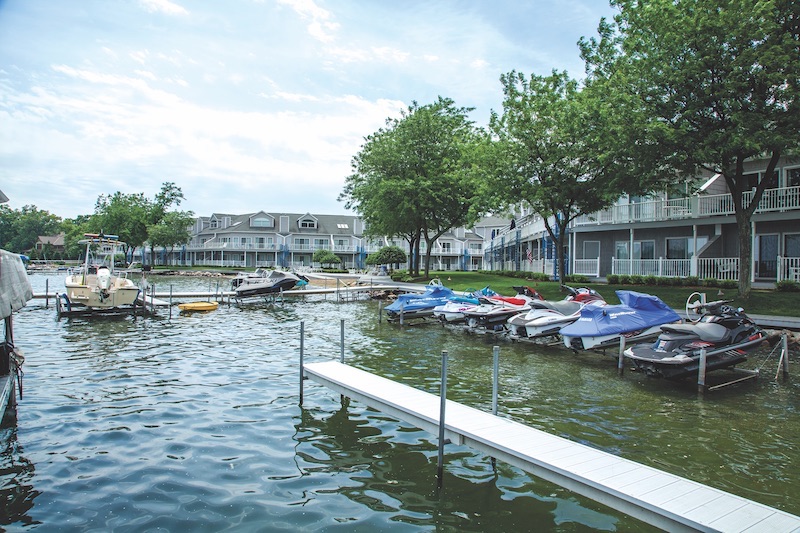 Culver Cove, an 80-unit condo community in Culver, Ind., installed Navien tankless water heaters to improve its overall energy efficiency.
Culver Cove, an 80-unit condo community in Culver, Ind., installed Navien tankless water heaters to improve its overall energy efficiency.
Lambert and Boyles worked with Jason Richards, Owner of A+ Plumbing Heating and Cooling, to work out details for sizing, designing, and installing the system. The installation of each section took about a week and a half, including removing the old tanks. The five Navien units used two sets of four-inch PVC vent pipes that ran through the roof in an existing 12‑inch B vent.
BENEFITS OF NAVIEN NPE TANKLESS SYSTEM
Efficient hot water supply. “The five Navien units are cascaded so when the master unit comes on, it triggers the next one in line to help as needed, and so on until all units are running if necessary,” said Richards. “Each time a Navien unit comes on, it’s a different master-slave situation, so all five units have equal run times.”
Technical factors. “Unlike the old tank system, we could eliminate the external circulating pump and mixing valve, since we can set the temperature at 120 degrees,” said Boyles. Another factor in selecting Navien NPE-A tankless water heaters was the internal recirculating pump and buffer tank, which assure an uninterrupted flow of hot water.
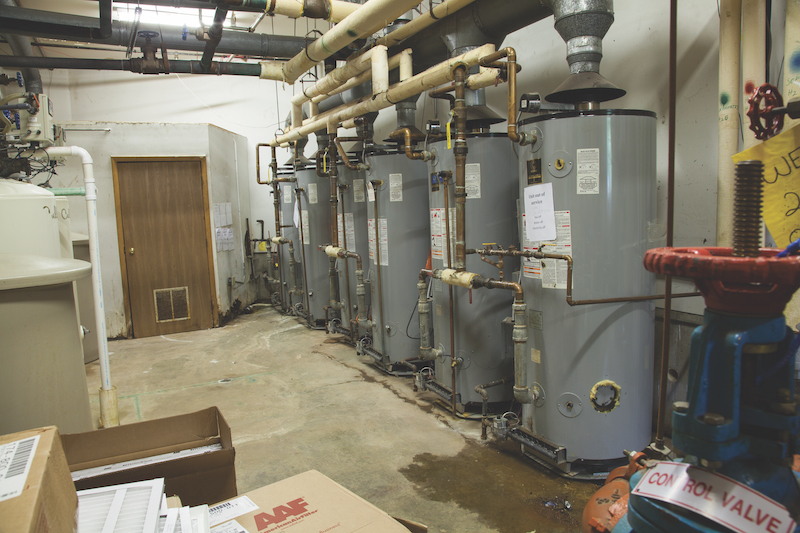 Old conventional water heaters at Culver Cove condominiums were replaced to improve energy efficiency.
Old conventional water heaters at Culver Cove condominiums were replaced to improve energy efficiency.
Energy and water savings. “We have noticed a decrease in our energy cost from NIPSCO, our local gas supplier—a real dollar savings every month,” said West. “We have applied for an energy rebate. I also have seen a decrease in our domestic water use.”
Easier installation. “One of the main reasons we went with Navien is the ability to use PVC,” Richards said. “The common venting also makes it less expensive. In this retrofit situation, we could use existing penetrations to run our vents. That saved a lot of labor.”
For more information: NavienInc.com.
Related Stories
| May 15, 2012
National Tradesmen Day set for Sept. 21
IRWIN Tools invites the nation to honor "The Real Working Hands that Build America and Keep it Running Strong".
| May 14, 2012
Codes harvest rainwater
IAPMO’s Green Plumbing and Mechanical Code Supplement could make rainwater harvesting systems commonplace by clearly outlining safe installation and maintenance practices.
| May 14, 2012
Plumbing research coalition to study drainline transport issue
The effort is aimed at determining if decreasing levels of water flow––caused by increasingly efficient plumbing fixtures––are sufficient to clear debris from plumbing pipes.
| May 1, 2012
White paper discusses benefits of diaphragm and piston flushometer valves
The white paper highlights considerations that impact which type of technology is most appropriate for various restroom environments.
| May 1, 2012
Bruce E. Brooks Associates announces new commissioning subsidiary
Brooks + Wright Commissioning to be led by Will Wright.
| Apr 26, 2012
Blackney Hayes Architects launches new engineering division
The new division, BHH Engineers, will be led by Mark Hershman, PE.
| Jan 26, 2012
American Standard names Gould as president and CEO
Gould succeeds Don Devine, who led the successful turnaround of American Standard Brands.
| Dec 2, 2011
What are you waiting for? BD+C's 2012 40 Under 40 nominations are due Friday, Jan. 20
Nominate a colleague, peer, or even yourself. Applications available here.
| Oct 6, 2011
GREENBUILD 2011: Growing green building market supports 661,000 green jobs in the U.S.
Green jobs are already an important part of the construction labor workforce, and signs are that they will become industry standard.
| Oct 5, 2011
GREENBUILD 2011: Kohler builds sustainable booth at Greenbuild 2011
In a setting composed of reclaimed materials, biodegradable signage, energy-efficient lighting and more, exhibitor highlights its new products with ecological awareness.


